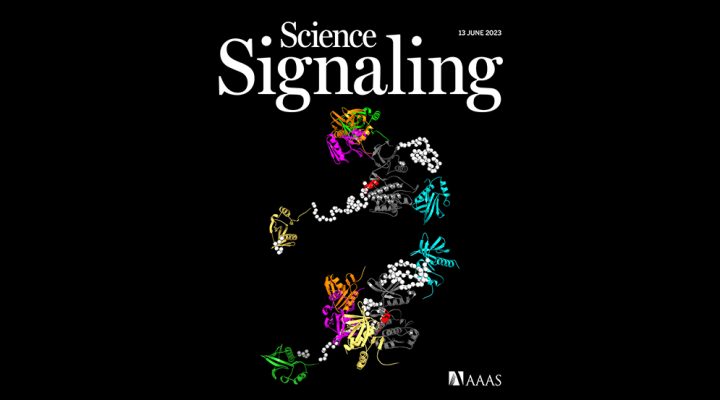BIOLOGICAL AND HEALTH SCIENCES
CONICET researchers managed to manipulate a protein involved in the development of cancer.
This could promote the development of innovative and selective therapies aimed at stopping tumor growth in the future.
The Chemical Biology of Regulatory Mechanisms group of the Biomedicine Research Institute of Buenos Aires (IBIOBA, CONICET-MPSP), led by CONICET researcher Ricardo M. Biondi, has been studying the structure of PDK1 for years, a protein kinase that fulfills a fundamental role in cell signaling and which is closely linked to the growth and survival of cells. PDK1 has many substrates -or proteins- that it activates through this signaling pathway, and that in many types of cancer this pathway is enhanced, helping cancer cells to grow and survive out of control.
For that reason, the scientists began to study AKT, one of the substrates that PDK1 activates and that is part of the mentioned signaling pathway. The experts found that if it was turned off, death can be induced in cancer cells, because they stop receiving the growth signal. The challenge then is how to turn off AKT: “It is very difficult to make a drug that turns off only one of the proteins, and if you turn off all of them, toxic processes and sometimes very harmful side effects can be triggered,” says Mariana Sacerdoti, CONICET doctoral fellow at IBIOBA and first author of a study published in the Science Signaling, from the Science group, which was chosen for the cover of the latest issue.
Discovering the structure
In this work the researchers focused on studying PDK1 in its entirety: “Studying the structure of whole proteins (how they are) is very difficult when they have two domains -something like two parts-, as in this case, because you have to use different techniques and are very complex”, explains Sacerdoti.
PDK1 has a kinase domain, which adds phosphate to substrates, and also a PH domain, whose function is to bind a lipid (PIP3) to the cell membrane.
An interdisciplinary approach that included structural, bioinformatics, and chemical biology techniques allowed the research team to discover the 3D shape that PDK1 adopts when it does not phosphorylate AKT (that is, it does not activate it), but activates other substrates. This mechanism is key not only because it indicates that a protein so relevant in cancer could be ‘turned off’ without turning off others, but also because they found a molecule with which they could stabilize this conformation, achieving substrate-selective inhibition of PDK1.
“We are not inhibiting the kinase as a whole, but we managed to inhibit only a small part: the activation of this substrate, while all its other functions that are so important for cell communication could be preserved. This is the first time that this manner of selective substrate inhibition of PDK1 with respect to AKT has been described”, adds Sacerdoti.
Then, through chemical biology techniques, the researchers were able to selectively block PDK1, study a protein with two domains in solution to extract information about the structure and relate it to a functional consequence: it cannot activate its substrate when it is in the specific conformation what the scientists discovered
In many types of cancer, this signaling pathway is “more activated” and PDK1 is one of the posts within that pathway. In summary, since PDK1 activates several kinases that promote cell growth and survival, these results may provide ways to selectively manipulate PDK1 activity for future cancer treatments
References
Department of Communication of the Biomedicine Research Institute of Buenos Aires (IBIOBA, CONICET-MPSP)
